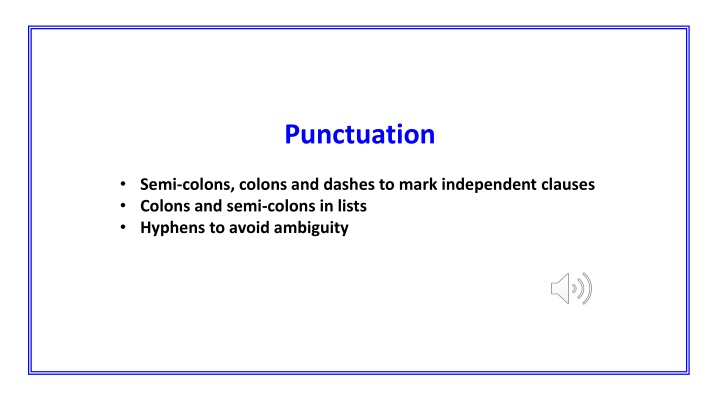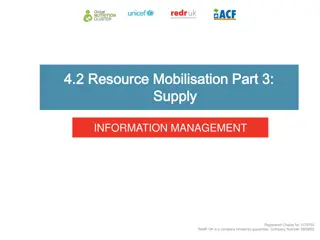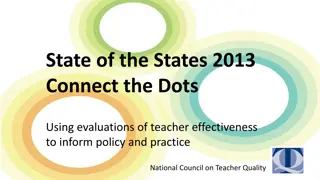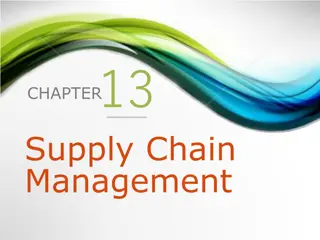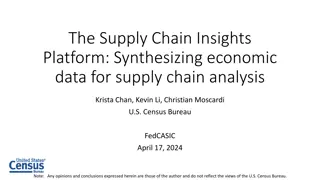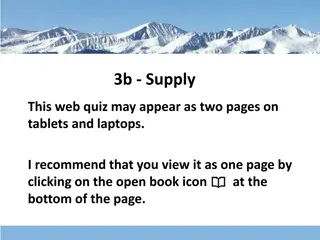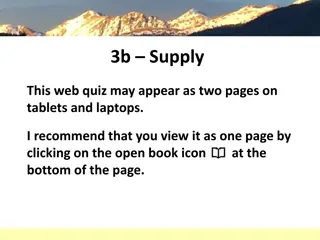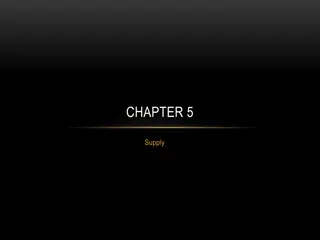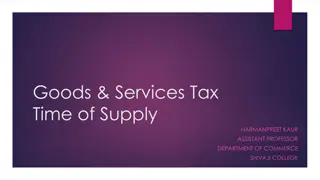Teacher Supply in California: 2020-21 Report to Legislature
This report, submitted every April, covers teacher supply in California for the period of 2020-21. It includes data on new teaching credentials, distribution by preparation pathway, changes in credential proportions, and more.
Download Presentation

Please find below an Image/Link to download the presentation.
The content on the website is provided AS IS for your information and personal use only. It may not be sold, licensed, or shared on other websites without obtaining consent from the author.If you encounter any issues during the download, it is possible that the publisher has removed the file from their server.
You are allowed to download the files provided on this website for personal or commercial use, subject to the condition that they are used lawfully. All files are the property of their respective owners.
The content on the website is provided AS IS for your information and personal use only. It may not be sold, licensed, or shared on other websites without obtaining consent from the author.
E N D
Presentation Transcript
Punctuation Semi-colons, colons and dashes to mark independent clauses Colons and semi-colons in lists Hyphens to avoid ambiguity
Semi-colons are used in formal writing. Using Semi-Colons to link clauses Semi-colons can be used to link two independent clauses that are closely related. The semi-colon emphasises the close link. We tried as hard as we could. We crashed within seconds. We tried as hard as we could; we crashed within seconds. It links main clauses like a co-ordinating conjunction. The two clauses have equal weight. Our machine had taken months to build; it was now in pieces. We swam for the shore; the crowd applauded and laughed. To link two clauses: replace the full stop with a semi-colon and then use lower case to start the second main clause.
Colons are used in formal writing. Using Colons to link clauses Colons are used slightly differently. They also show a link between clauses, when the second clause expands the first. The colon emphasises how the second clause expands on the first. She flew a record-breaking distance. Her craft was aerodynamic. She flew a record-breaking distance: her craft was aerodynamic. It links clauses like a subordinating conjunction. The second clause has less weight than the first. She deserved her success: she had planned her design carefully. She was overwhelmed: she had not expected to break the record. To link two clauses: replace the full stop with a colon and then use lower case to start the second main clause.
Dashes are used in informal writing. Using Dashes to link clauses We can use dashes like colons and semi-colons. They indicate grammatical breaks. They are used in informal writing the rules are less precise. My heart was beating like crazy it was awesome . I m so proud I can t wait to tell Nan. It just kept going you re a complete hero. To link two clauses: replace the full stop with a dash and then use lower case to start the second main clause.
Colons in lists Colons are used in formal writing. Colons can be used to introduce lists. We use them if the list comes after an independent clause. You may be required to bring many items: custard pies, a towel and a change of clothes. The colon comes after the independent clause. I was most impressed by the following: the size of the beards, the range of styles and the care that was taken. We do not use a colon if the words before are not an independent clause. To be successful you should try your best, listen to instructions and have fun. 'To be successful you should is not an independent clause. We do not use a colon.
Semi-Colons in lists The semi-colons separate the four items: Semi-colons can be used to separate items in lists. We use them when it will make the list clearer. lights babies The sights we saw amazed us: bright lights; babies, supported by their parents, in the centre of the arena; an enthusiastic, noisy, shouting crowd; and, watching carefully, a group of expert-looking judges. crowd judges The sights we saw amazed us: bright lights, babies, supported by their parents, in the centre of the arena, an enthusiastic, noisy, shouting crowd and, watching carefully, a group of expert-looking judges. Without semi-colons it is not clear how many items there are. When the items in a list already include commas, it helps to use semi-colons.
Using hyphens to avoid ambiguity Hyphens can be used to join compound adjectives to avoid confusion. The worm is charming the competition? a worm charming competition a worm-charming competition Hyphens can be used with prefixes to avoid confusion. I thought he was coming back! Satnam resigned last week. Satnam re-signed last week. Hyphens can also be used when a prefix creates repeated vowels e.g. re-enter (not reenter)
